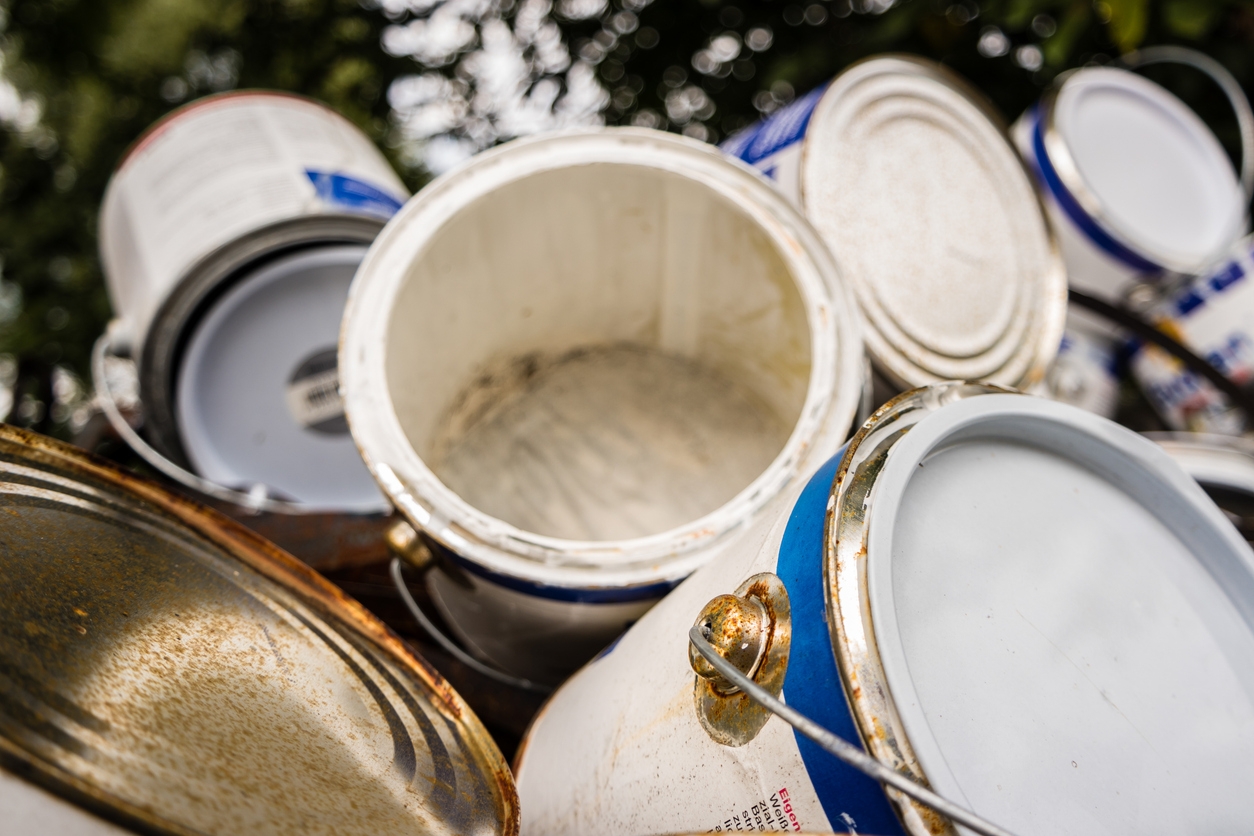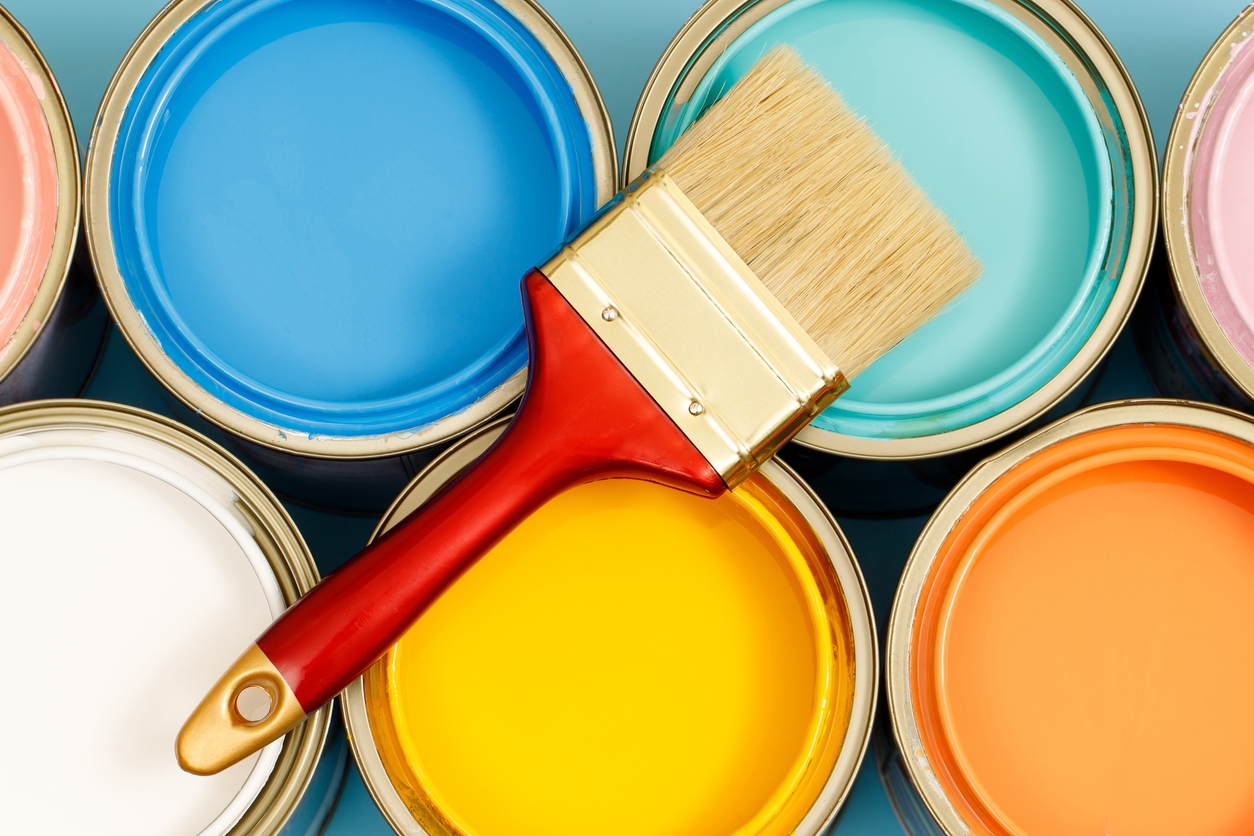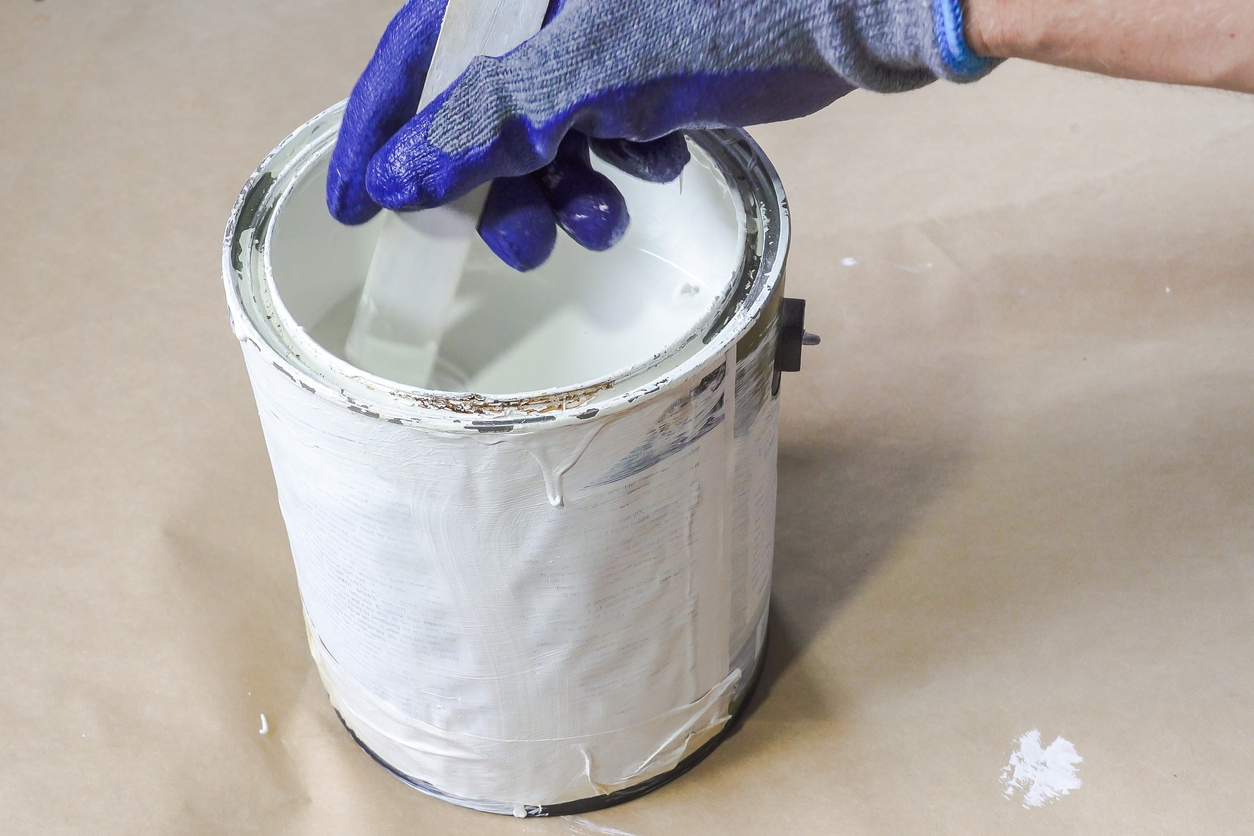There are times when you don’t use all the paints in a residential or commercial painting project. So, it’s time to seal cans of leftover paint and take them to the garage, basement, or other storage area. You can reuse leftover paint for touch-ups and minor paint projects. But the common question is – does paint go bad?
The answer is yes—all paint types expire eventually. Different types of paint have varying shelf lives and require specific storage methods to remain usable. Ensuring you follow the correct practices can help preserve your paint’s quality and extend its usability, allowing you to use it for future touch-ups or other projects.
Understanding paint shelf life
General shelf life
- Latex (water-based) paint: Typically lasts 2-10 years. Its longevity depends on storage conditions such as temperature and whether it’s tightly sealed. If the paint is stored in a cool, dry place and the container is well-sealed, it can last longer.
- Oil-based paint: Has a longer shelf life, often up to 15 years, when stored properly. Like latex paint, it should be kept in a cool, dry place and the container must be tightly sealed to prevent drying out.
Factors affecting shelf life
- Type of paint: The chemical composition impacts paint longevity. Latex paints, being water-based, may separate or develop mold over time, while oil-based paints can become thick and gooey.
- Storage conditions:
- Temperature: Extreme temperatures can affect the paint’s consistency. Store paint in a moderate temperature range, typically between 50-80°F (10 and 27°C).
- Exposure to air: Seal paint containers tightly to minimize exposure to air, which can lead to drying or thickening.
- Container sealing: Sealing the paint can properly prevent it from drying out or developing skin on top.
Correct storage is crucial to extending the shelf life of paint and ensuring it remains usable for future projects.
Proper storage techniques to extend paint life
1. Tightly seal the paint can
- Re-sealing the can: Before closing the paint can, clean the rim and lid to remove any excess paint. Doing so ensures a tight seal and prevents air from entering, which can cause the paint to dry out or thicken.
- Storing the can upside-down: Once tightly sealed, store the paint can upside down. Doing so creates an airtight seal by allowing the paint to form a barrier at the lid, which helps prevent skin from forming on the paint’s surface.
2. Store in a cool, dry place
- Avoid extreme temperatures: Store paint between 50°F and 80°F. Exposure to freezing temperatures or excessive heat can damage the paint, causing separation, clumping, or spoilage.
- Humidity control: Keep leftover paint in a dry environment. High humidity can introduce moisture into the can, leading to spoilage and compromising the quality of the paint.
3. Use smaller containers for leftovers
- Transfer to smaller jars: To extend the life of leftover paint, transfer it to smaller, airtight containers. Doing so minimizes air exposure, which helps preserve the paint’s quality for future use.
Signs that paint has gone bad
Visual signs
- Lumps, clumps, or separation: Paint that has gone bad may have a lumpy or clumpy texture or appear separated, with a watery layer on top. If the paint doesn’t mix back into a smooth consistency after stirring, it’s likely unusable.
- Mold or mildew: The presence of mold spots or mildew on the paint’s surface and their musty smell indicates that the paint has spoiled and should be discarded.
Odor
- Sour or foul smell: A disagreeably sour odor, especially common in latex paints, indicates bacterial growth, a sign the paint has expired.
Texture
- Inability to smooth out: If stirring the paint doesn’t result in a smooth, even consistency, and it remains chunky or grainy, it means the paint has degraded and will not apply properly.
Testing leftover paint for usability
Stirring the paint
- How to stir: Paint tends to separate over time, with the pigments sinking to the bottom and the thinner liquid floating on top. Use a sturdy paint stirrer or drill attachment to mix the paint thoroughly.
- Signs of usability: If, after 5–10 minutes of stirring, the paint returns to a smooth, consistent texture, it’s likely still good. If clumps persist or the paint remains watery, it may have deteriorated beyond use.
Applying a test patch
- Where to apply: Choose a small, inconspicuous area on the surface where you plan to use the paint (or use a scrap piece of material). Use a brush or roller to apply a thin coat.
- What to look for: Check the consistency of the application—smooth and even coverage indicates the paint is in good condition. Let the patch dry for the recommended drying time, and observe if it dries evenly and adheres well to the surface.
- If the paint bubbles, cracks, or peels, it’s likely unusable.
- If it doesn’t adhere smoothly or remains tacky after drying, this could indicate spoilage.
Straining old paint
- How to strain: Older paint often contains dried lumps or bits of debris that can affect the finish. Pour the paint through a paint strainer or a fine-mesh filter into a clean bucket. This process helps remove any solids and ensures smoother application.
- Outcome: If the paint strains smoothly and looks consistent after straining, it may still be usable. However, if the paint remains lumpy, thick, or smells foul (indicating bacterial growth), it’s best to discard it.
Proper disposal of old or unusable paint
Latex (water-based) paint disposal
To properly dispose of latex paint, allow it to dry out completely. Do this by leaving the can open in a well-ventilated area or using a paint hardener. Once dried fully, you can throw latex paint in regular household trash.
Oil-based paint disposal
Oil-based paint is classified as hazardous waste and should not be thrown away with regular trash. It must be taken to a designated hazardous waste facility for correct handling and disposal.
Environmental considerations
It’s crucial not to pour paint down drains or dispose of liquid paint in the trash. Doing so can cause significant environmental harm, contaminating water supplies and damaging ecosystems.
Recycling programs
Check with local recycling centers or paint stores for recycling programs that accept unused or expired paint. These programs help reduce waste and allow paint to be repurposed or recycled properly.
Tips for maximizing paint longevity
To maximize paint longevity, consider the following tips:
Label your paint cans: Write the date of purchase and the room the paint was used for directly on the can. Doing so helps track the paint’s age and makes future touch-ups easier. Record the paint color code or formula on the label so you can match the color if needed.
Use leftover paint for minor projects: Avoid wasting paint by using leftover amounts for smaller DIY projects, such as painting furniture or accent pieces. You can also keep some for touch-ups to maintain consistency in color over time.
Rotate stock: When starting a new project, use older paint first to prevent it from sitting in storage too long and deteriorating. It ensures you get the most out of your existing stock before purchasing new cans.
Why consult a professional painter for your painting needs
Consulting a professional for your paint needs offers several benefits:
- Expert paint selection and storage: Professionals can recommend the suitable type of paint for your specific project, ensuring longevity and durability. They also advise on proper storage techniques so that leftover paint lasts longer for touch-ups.
- Proper application and disposal: Professional painters ensure precise application, preventing premature peeling or fading. They also follow best practices for storage and responsible disposal, reducing waste and the need for frequent repainting.
- High-quality paint and materials: Professionals often have access to premium, long-lasting paints and tools, which contribute to better results and longer paint shelf life, minimizing the need for frequent touch-ups or repainting.
Parting words
Proper paint storage is essential to extending its shelf life, helping save time and money on future projects. Keeping leftover paint in a cool, dry place and ensuring the lid is tightly sealed allows you to preserve its quality for touch-ups or new projects. However, watch for signs that your paint has gone bad, such as an unpleasant odor, clumping, or separation. When this happens, dispose of it responsibly at a local recycling facility.
For expert advice on choosing the right paint, proper application techniques, and tips on long-term storage, contact Custom Painting, Inc. at 925-686-0903 or on our contact page. Our number one priority is to ensure your next project is a success!





